Spaces around Digital Access: Kiosks in sub-Saharan Africa
In “The Atomized Library” Geoff Manaugh asks a closing question “when it comes to public libraries, whether we’re referring to New York City or Ciudade del Este, what is the architectural equivalent of One Laptop Per Child? Is the future of the community library a modular shed, or has an entire building type been made obsolete by handheld devices? “ (BLDBLOG, 11 Feb 2010). I would like to explore the work ongoing with several kiosk-based initiatives in sub-Saharan Africa and try to address at least some parts of Manaugh’s question by developing an understanding of how these emerging environments work to provide something like “public libraries.”
I will first provide an overview and background of the Digital Drum and Digital Doorway projects. These are being run, respectively, out of Ugandan and South African technology development centers. Second, I will discuss some of the issues around library and space, particularly through the lens of “information as experience” raised by Anna Klingmann in her essay on datascapes. Finally I will explore how the “physical space [of these kiosks] supports, or fails to support … core information provision and public service functions.”
I. Background of Kiosks as Libraries
The two “libraries” that I will discuss are variations on the same theme. They are both rugged physical objects that can be left in rural communities in sub-Saharan Africa (or elsewhere) with relatively little day-to-day care and maintenance. They are built to withstand climate (dust and temperatures regularly over 40C), social dangers (theft, abuse) and most importantly the curiosity of children who will inevitably try to make “creative” upgrades to such devices using twigs, rocks or other bits of material that may be lying around.
The Digital Doorway (Fig 1, below) was built in South Africa by a team of researchers at the Council for Scientific and Industrial Research in Pretoria. The Digital Drum (Fig 2, below) was built in Uganda by UNICEF’s Technology for Development unit in the UNICEF Uganda country office.
Figure 1: Digital Doorways awaiting deployment in Uganda, built by the Council for Scientific and Industrial Research, South Africa (photo: Chris Fabian)
Figure 2: Children in Kampala, Uganda using a Digital Drum (built from used oil drums) prototype at an education fair. (photo: Sean Blaschke)
Both of these kiosks are similar in many regards, and they do not stand alone in the world of technology for development. Manaugh mentions the One Hundred Dollar Laptop (or OLPC) in his blog post, but that particular device has had a troubled history and cannot be, at this time, considered as “library” environment in the way that these kiosks can. The issues behind the failures of the OLPC are manifold and could (should) be a dissertation in their own right, but for the purposes of this discussion, the OLPC failed because it was not tested with users, Negroponte was not able to secure any significant agreements from country governments to go to scale and the device itself was foreign enough that its uptake in communities was at best troublesome and at worst a danger to those carrying it around.
Without spending too much time on the pedagogic particulars of the kiosk projects, they do come, fundamentally from the same constructionist (Seymour Papert et al.) school of teaching and learning that inspired the OLPC.
Many of the theories expressed at MIT’s Media Lab concerning the use of technology for education and dissemination of information came to life in Dr. Sugata Mitra’s “Hole in the Wall” project in India. In this project, Dr. Mitra provided children access to a terminal and watched while, with no external instruction, children from some of the poorest slums began to teach themselves how to use the interface. (TED Talks, Sugata Mitra).
Figure 3: Artist’s rendering of how kiosks can supplement traditional information sources by providing localized audio / visual accompaniment to textbooks.
With these elements in mind, the teams behind the Digital Doorway and Digital Drums have sought to understand how a fixed, ruggedized kiosk – an Automated Teller Machine for access to information – placed in some of the most difficult operating environments in the world can become a source of information and a place of learning. The kiosks contain tremendous amounts of information. Content includes everything from a cached / offline copy of Wikipedia, to books from Project Gutenberg, to a wide array of videos in local languages on topics from health to basic mechanical engineering. They also include panoply of content that is slightly less traditional from the library point of view – every thing from educational games to content created by young people (the kiosks have microphones and webcams) and their teachers. Hardware, operating system and all content are entirely open-source and in the public domain.
Figure 4: Over 200 Digital Doorway locations in South Africa.
II. Kiosks and Public Space
The kiosk computers described above are meant to be eminently “public.” The locations where they are located are not inside facilities rather, within the limits of security concerns, in places that are as accessible as possible. Concretely this can mean being placed outside of youth centers, near government or traditional leadership’s buildings, in proximity to schools or health centers. In theory this sounds terrific. These “libraries” of information are expressly designed to be externally facing, and to be non-enclosed. This obviously makes it more difficult to maintain and care for them, but the expectation, following from Dr. Mitra’s work in Indian slums, is that this public-facing nature will create a kind of accessibility and universality that would not be present in the sort of enclosures described in Manaugh’s blog post.
In a sense these new access points can potentially become a new information landscape. As Figure 4 (above) shows, this potential is enormously exciting. The green dots that pepper the north-east districts of South Africa in Figure 4 are not a landscape of lack, a landscape of misery or sorrow (though of course they do indicate, obliquely, some of the most poverty-ridden communities). The green dots in Figure 4 are indicators of access, of places where there is information, there is access to “a library,” where kiosks present hope rather than represent its absence. “Encompassing both …concrete delimination as well as the potential of unlimited space… the new library constitutes an emergent typology,” says Klingmann, “[it is n]either restricted to territorial boundaries of physical enclosure nor to a space entirely aterritorialized…” (Klingman, 408).
Perhaps these kiosks can help us understand what the coming library is – particularly in heavily resource-constrained environments. However there are (at least) to enormous hurdles that are already arising – which, interestingly – mirror historical barriers to access put in place by / with / near libraries of various types. A major area of discussion and further understanding concerns control of the space in which kiosks in sub-Saharan Africa exist. I break this into two sub-areas for ease of discussion – first access restrictions placed on “users” of the library by authority, and second access placed on groups of users by other groups of users.
II.I Restricted Access by Authority:
Klingmann says “… it could be argued that the library throughout history has always presented a contested territory of prevailing powerstructures affected simultaneously by economic conditions, technological innovations and most importantly the social production of knowledge” (406).
On a recent (March, 2011) trip to Uganda, our team visited a site where a digital doorway had been installed several months prior. When the initial installation had happened it was agreed, with the community leaders, that the Digital Doorway would be placed outside a youth center, in an area still covered by an awning. This would provide access to anyone who wanted to use it, and also some amount of shelter from both the hot northern Ugandan sun as well as the heavy seasonal rains.
On the second visit, the team found that some minor changes had been made:
Figure 5: Digital Doorway in its very own child-proof cage. Engineer Jean-Marc ironically signals his disapproval.
When the community leaders were asked why a huge metal cage had been built around the bullet-proof, fire-proof, child-proof Digital Doorway the response was: “well, to protect it.” In many ways this sentiment is exactly parallel to the feeling of protectionism (particularly historically) in libraries. When the resources (books) are so valuable that their loss or damage would have a financial impact on a person or facility, notions of ownership and care change considerably. Similarly, today in the Morgan library (where volumes were originally collected for their pure financial value) every book is behind bars. The Morgan’s filigreed bars look a bit nicer than the 6cm iron in Figure 5, but they serve the same purpose. Keep the value in, and keep the peoples’ hands out.
II.II Restricted Access by Users:
Access controls from authority figures can be managed. Allowances can be negotiated. Metal bars can be removed (as the ones in Figure 5 have been). What is potentially more difficult are access controls put in place by the users themselves. Dr. Mitra’s TED talk paints a quite rosy picture of the heterogeneity of users who have access to a digital library such as the Hole in the Wall or the Digital Doorway. In many of the sites that I have seen in sub-Saharan Africa there is a slightly different dynamic. What is wrong with Figure 6 (below)?
Figure 6: “Old boys’ club” using a Digital Doorway in South Africa (photo: Grant Cambridge)
Average age of the “library user” in this picture is probably mid-teens. Gender balance is 100% male, 0% female using the kiosk. While there are some very irritated looking young girls in the foreground, it does not appear that they will have access to the Digital Doorway anytime soon, or with any sort of ease.
This is a huge problem. It means that those who often most need access to information may not have it, and that the expense and thought that goes into installing a kiosk may be maintaining, if not growing, a divide in the communities where they are being placed. This pattern of usage is common among many of the installation sites, both for these kiosks and also for more standard “computer labs.” It extends, as well, to paid centers of access. Plan International’s recent report on adolescent girls and technology highlights this gulf excellently. Resoundingly, in the developing world adolescent girls find internet cafes to be less safe than their male peers do. (Plan International, Because I am a Girl)
III Can this “library” work?
Exploring the question of success of this new type of library, specifically how does the “physical space [of these kiosks] support, or fails to support … core information provision and public service functions” brings up some issues particular to the context in which the kiosks are being placed that are slightly different to issues that would be raised in, say, suburban America. The main issue to be noted is that in these contexts, in, for example, north-eastern South Africa or in northern Uganda these kiosks may be the only things providing information and public service functions. This means, of course, that there is enormous potential, but it also means there is an enormous responsibility to ensure that there is equity of access to this resource, particularly because it is most likely the only technology kiosk of its kind anywhere nearby. As Grant Cambridge, the lead engineer of the Digital Doorway in South Africa loves to say: “for many of these villages technology is so far away that a “mouse” is just a mid-day snack.”
It seems that using some historical lessons and understandings from the world of book-libraries may help at least mitigate some of the issues of physical space and how these kiosks can support their communities. In-depth exploration of these solutions is too involved for this essay, but I will suggest, at least, some areas of discussion that may be had towards developing the necessary parity of access among age groups, genders, and populations of differing needs.
III.I Overcoming Limitations of Access by Authority
As mentioned above, authority can often be negotiated with. In the example of the iron cage that negotiation could have been fairly simple: “remove the iron cage or we remove the Digital Doorway.” That would have been the wrong way to achieve that particular end. Instead, our team lead discussions both about the ruggedness of the device itself, but also about how necessary it was for it to be accessed at all times. Reassuring leadership that the thing itself was not going to be harmed by being in the open, and that it was locked to a bed of concrete, so not liable to being easily stolen, provided a solution.
This, however, is not sustainable. Libraries began to open their collections to the dirty, un-manicured fingers of the masses particularly after the commodity price of individual books in collection was low enough that loss or breakage was not a career-ending tragedy (for a librarian). Even now, there is a clear parallel between the specialized collections with unique and expensive items and the levels of security around access. I would suggest that as we find technology solutions that are cheaper, have less perceived value, and are more omnipresent than a looming kiosk there will be a change in the way that “authority” in these communities deals with the library function.
III.II Overcoming Limitations of Access by Users Against Users
Libraries in the States increasingly design for their users. Examples of collections where the “media” (DVDs, etc.) are close to the front of the building, where the foreign language sections are placed in relation to how many people speak only that language in that community, where children’s areas are separated from the places in which research is done are plenty. It is clear that these same user design research engagements, and mappings of how all types of users encounter a “kiosk library” must be done in order to ensure equity and equality of access.
It is also quite apparent that as with the question of authority, many of these issues of access can be resolved through having less specifically localized points of access. A kiosk, and to some extent a physical building, will always be able to have those who are physically stronger and more “able” block access, if they want, for other groups. Looking at radios, and now, increasingly, mobile phones, we find examples of technologies that are so ubiquitous that they are very difficult to block. Perhaps here too there is a space to explore the extension of kiosk libraries.
In conclusion, the physical setup of kiosk libraries in sub-Saharan Africa provides an enormous set of opportunities to ensure access to information and use of that information to populations that desperately need it. Perhaps, foremost among those opportunities, though, is the chance to engage in active research, as these initiatives progress, in how users use the new library, who becomes the librarian, what is the book that is accessed and read, and many other questions. There is the opportunity to leapfrog past many of the historical advances of library science- and to leapfrog by looking at best practices and the trials-and-errors of others, rather than repeating them. Finally, there is the possibility to use both the ethnographic and technological research from places like northern Uganda to contribute to, and inform “back” into concepts of “library” in the “developed world” as these facilities, globally, morph and shift into the digital age.
ChrisF, April 2011
Works Cited:
Klingmann, Anna. Datascapes: Libraries as Information Landscapes, In Susanne Bieri & Walther Fuchs, Eds., Building for Books: Traditions and Visions(Boston: Birkhäuser, 2001): 406-23.
Manaugh, Geoff. The Atomized Library BLDGBLOG [blog post] (11 February 2010).
Plan International. 2010. Because I am a Girl. Available: http://plan-international.org/about-plan/
resources/publications/campaigns/because-i-am-a-girl-digital-and-urban-frontiers-2010
TED Talks . Sugata Mitra: Can kids teach themselves? < http://www.ted.com/index.
php/talks/sugata_mitra_shows_how_kids_teach_themselves.html > .
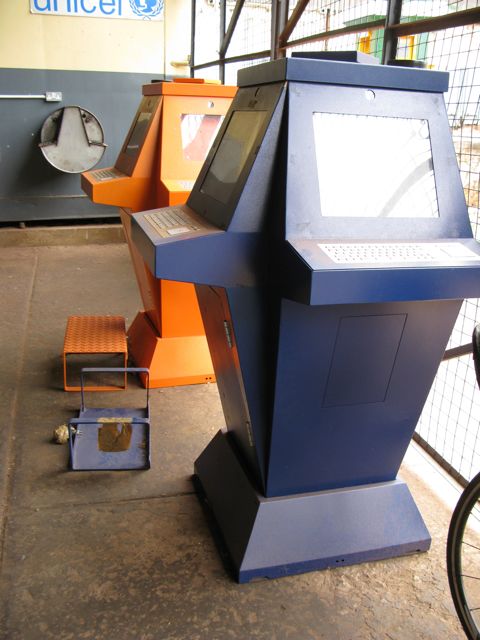
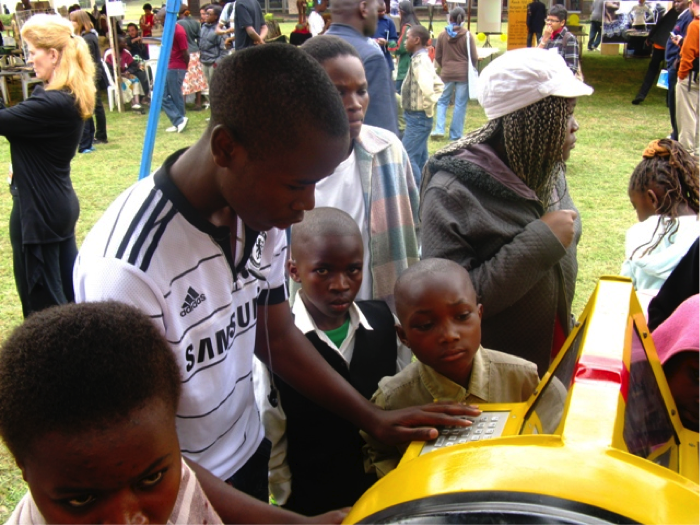
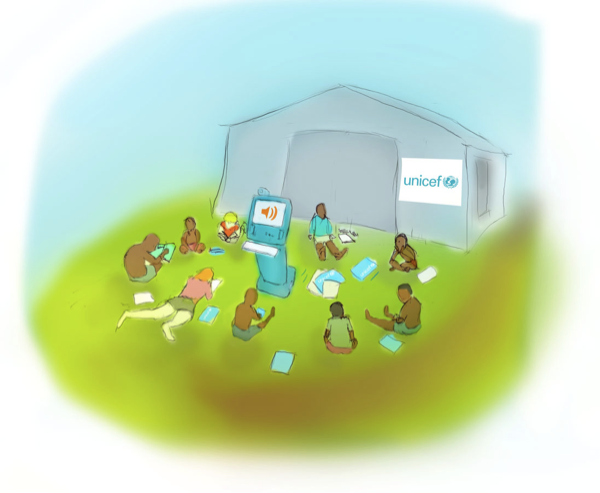

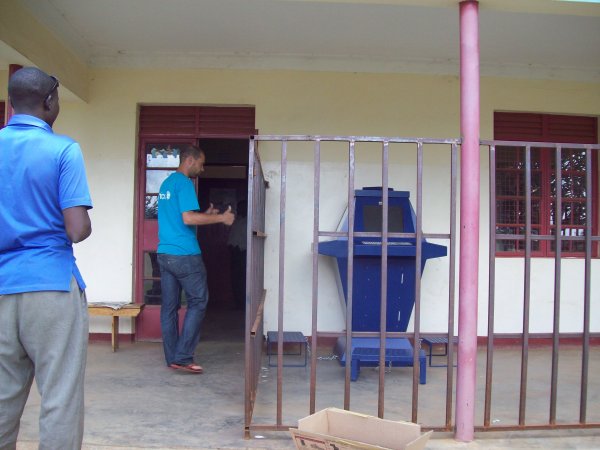
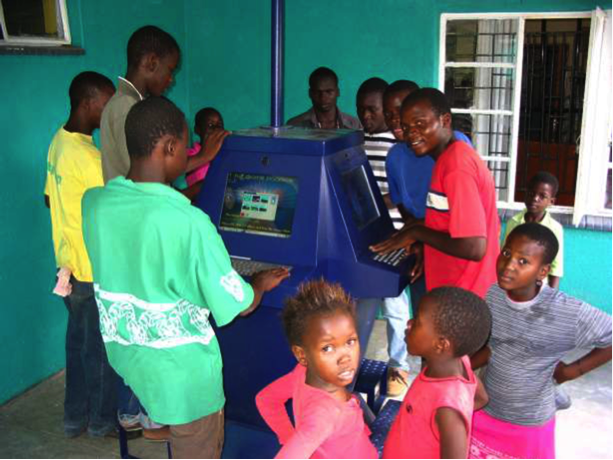
Leave a Reply